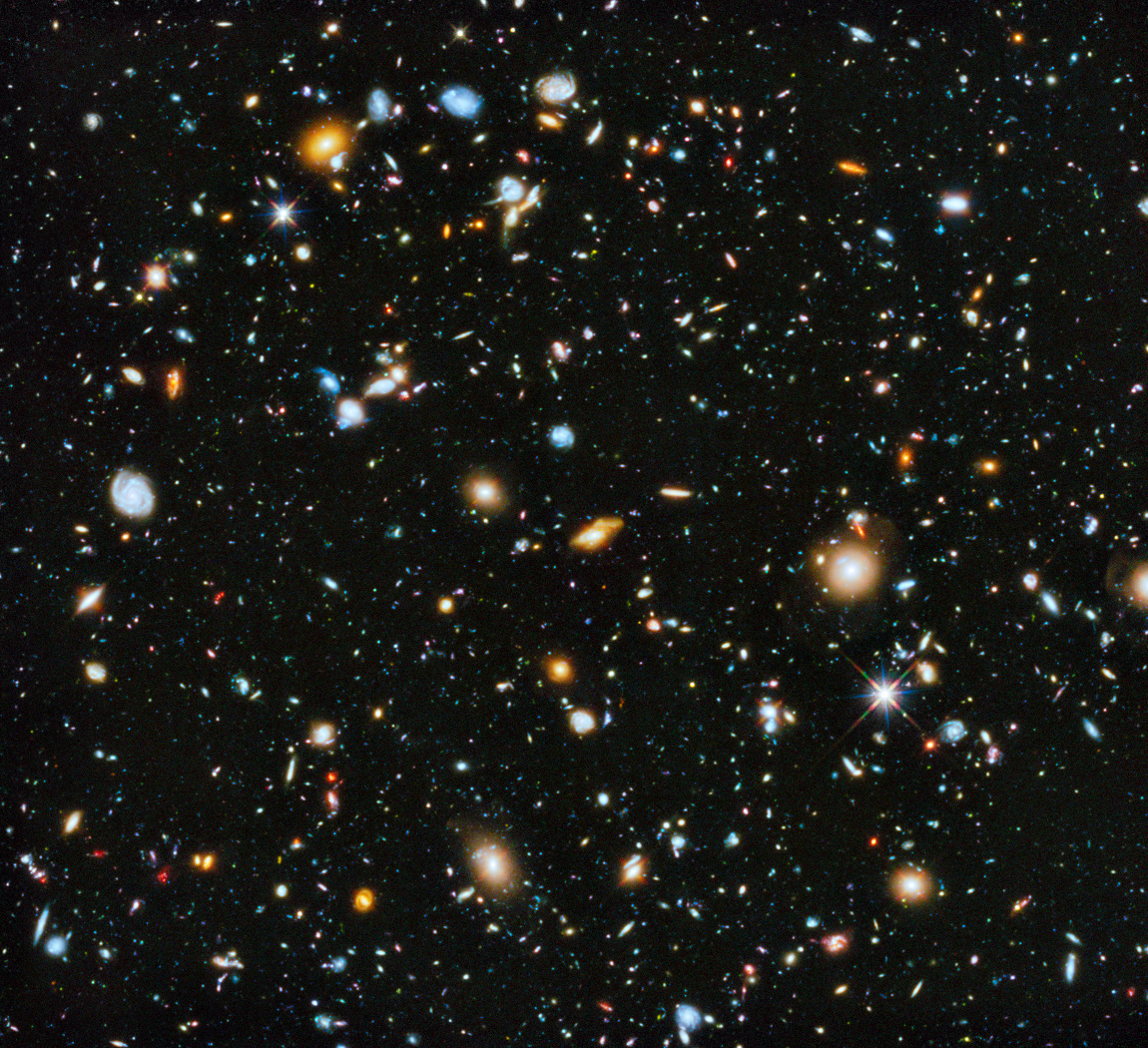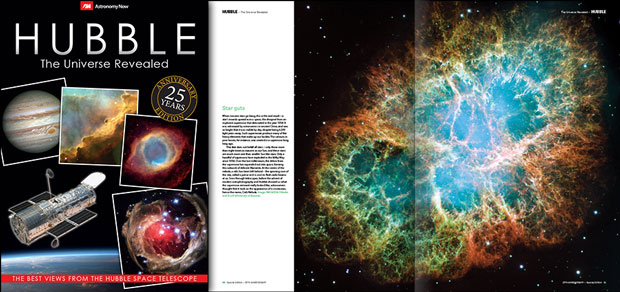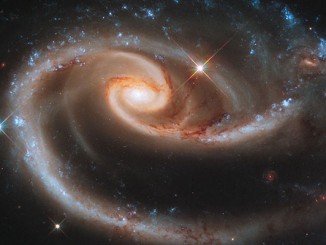
The $8 billion instrument has a primary mirror 2.4 metres in diameter and orbits the Earth at a height of 347 miles (559 kilometres), hurtling around the planet at 16,777 miles per hour (7.5 kilometres per second).
Named after American astronomer Edwin Hubble (1889-1953) — whose work led to the proposal the cosmos is expanding — the HST was built by NASA, with contributions from the European Space Agency, and is operated by the Space Telescope Science Institute.
On Friday, April 24th, the Hubble Space Telescope will celebrate exactly 25 years since it was launched. It has given mankind a glimpse at some of the farthest and earliest cosmic phenomenon in the observable universe. It is one of the most iconic scientific instruments ever created and is used by astronomers across the globe.
One of those who has taken advantage of the telescope’s unprecedented capabilities is the University of Leicester’s Professor Nial Tanvir, who has used the HST to explore the size of the cosmos and learn more about gamma-ray bursts — the most powerful electromagnetic events ever discovered.

“But if I had to pick one area in which it has had most impact, it would probably be the last of these.
“When HST was launched, studies of distant galaxies were limited to just a few of the brightest examples, and we lacked any clear idea about how galaxies had evolved to the present day.
“Because looking far away also means looking backwards in time, the ability of Hubble to resolve details of galaxies as they were much closer back to the Big Bang means that we now have a much better idea of the processes by which galaxies formed and have subsequently grown into the ‘mature’ forms they have today.”
The HST originally carried five main instruments — the Wide Field and Planetary Camera, the Goddard High Resolution Spectrograph, the High Speed Photometer, the Faint Object Camera, and the Faint Object Spectrograph.
Current HST instruments are ACS: Advanced Camera for Surveys; COS: Cosmic Origins Spectrograph; FGS: The Fine Guidance Sensors; NICMOS: Near Infrared Camera and Multi Object Spectrometer; STIS: Space Telescope Imaging Spectrograph; and WFC3: Wide Field Camera 3.
They are used for making observations in the near ultraviolet, visible and near infrared spectra — vital for looking back billions of years at light from the early universe.
The HST has captured images which have changed our perception of the universe forever. One such snapshot is the Ultra Deep Field — an image which shows more than 10,000 galaxies compacted into just a tiny portion of the night sky.
The ability to see so deeply into the cosmos has helped scientists confidently calculate the age of the universe.
Professor Tanvir’s work tracking stars known as ‘standard candles’ — large, luminous yellow stars (also known as Cepheids) — has only been possible thanks to the HST. Observing large numbers these giant astral bodies can give astronomers a very accurate measurement of their distance from Earth (and each other) and help map vast distances in space.
Observing large numbers these giant astral bodies can give astronomers a very accurate measurement of their distance from Earth (and each other) and help map vast distances in space.
Knowing these distances and calculating how quickly the galaxies are moving away from each other gives scientists like Professor Tanvir a fairly accurate picture how quickly the universe is expanding and can help calculate the age of the universe.
Professor Tanvir said: “It is extremely hard to do this kind of work with ground-based telescopes due to the blurring introduced by the atmosphere, but HST is ideal for it.
“In more recent years, I have mostly been using Hubble to observe gamma-ray bursts and their host galaxies. Since the hosts, particularly the most distant ones, are very faint, HST is essential, and in some cases even HST cannot see them — but does provide the most useful limits.”
Hubble: The Universe Revealed

Astronomy Now celebrates the 25th anniversary of the Hubble Space Telescope – the greatest telescope history has ever seen – with a selection of truly out- of-this-world imagery. This 116-page special issue is filled with superb pictures of glowing star-forming nebulae, the beautiful death throes of stars, gracefully spiralling galaxies, our nearest neighbours in the Solar System and the most distant look into the Universe ever taken. Order your copy of Hubble: The Universe Revealed today.



